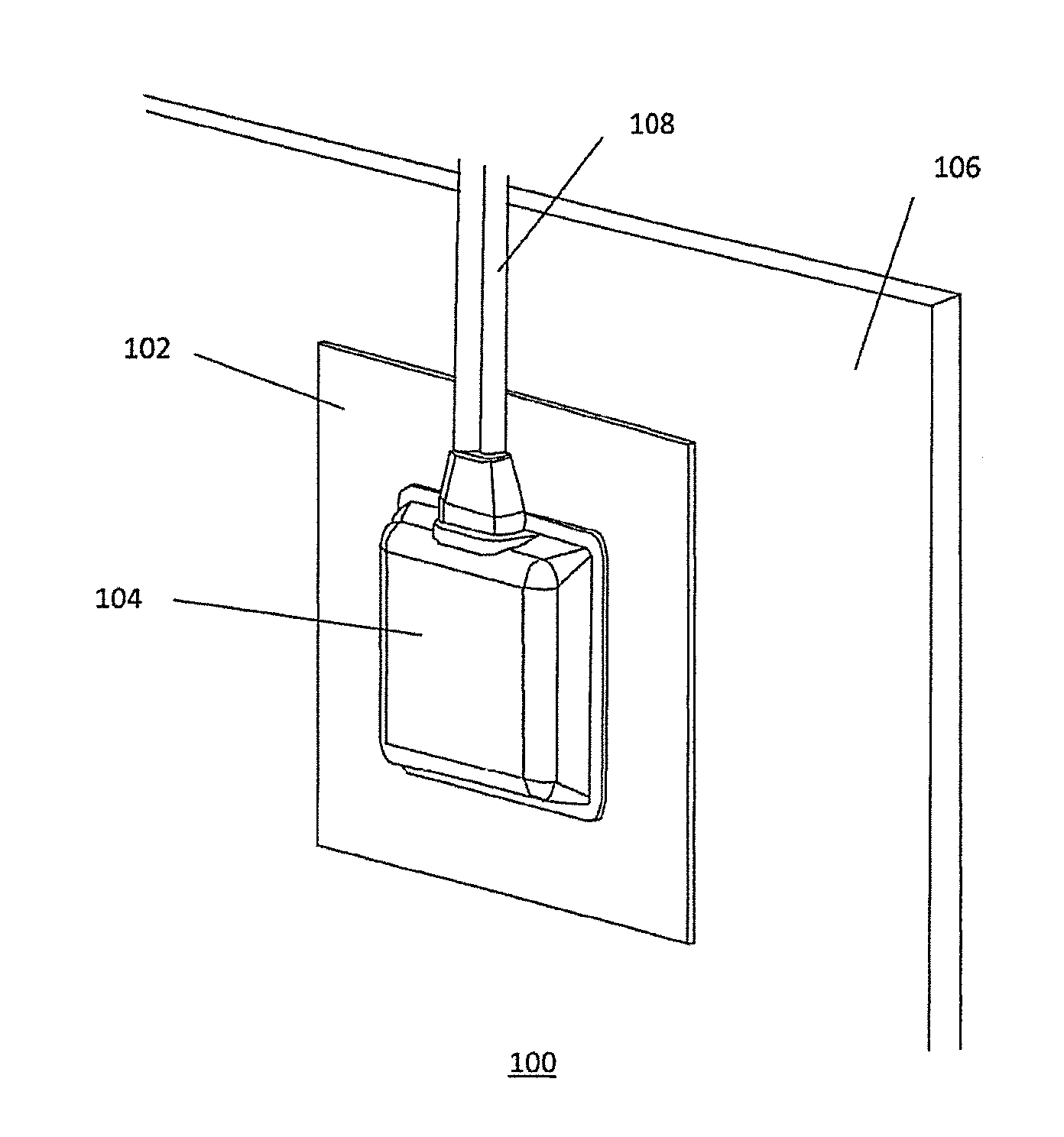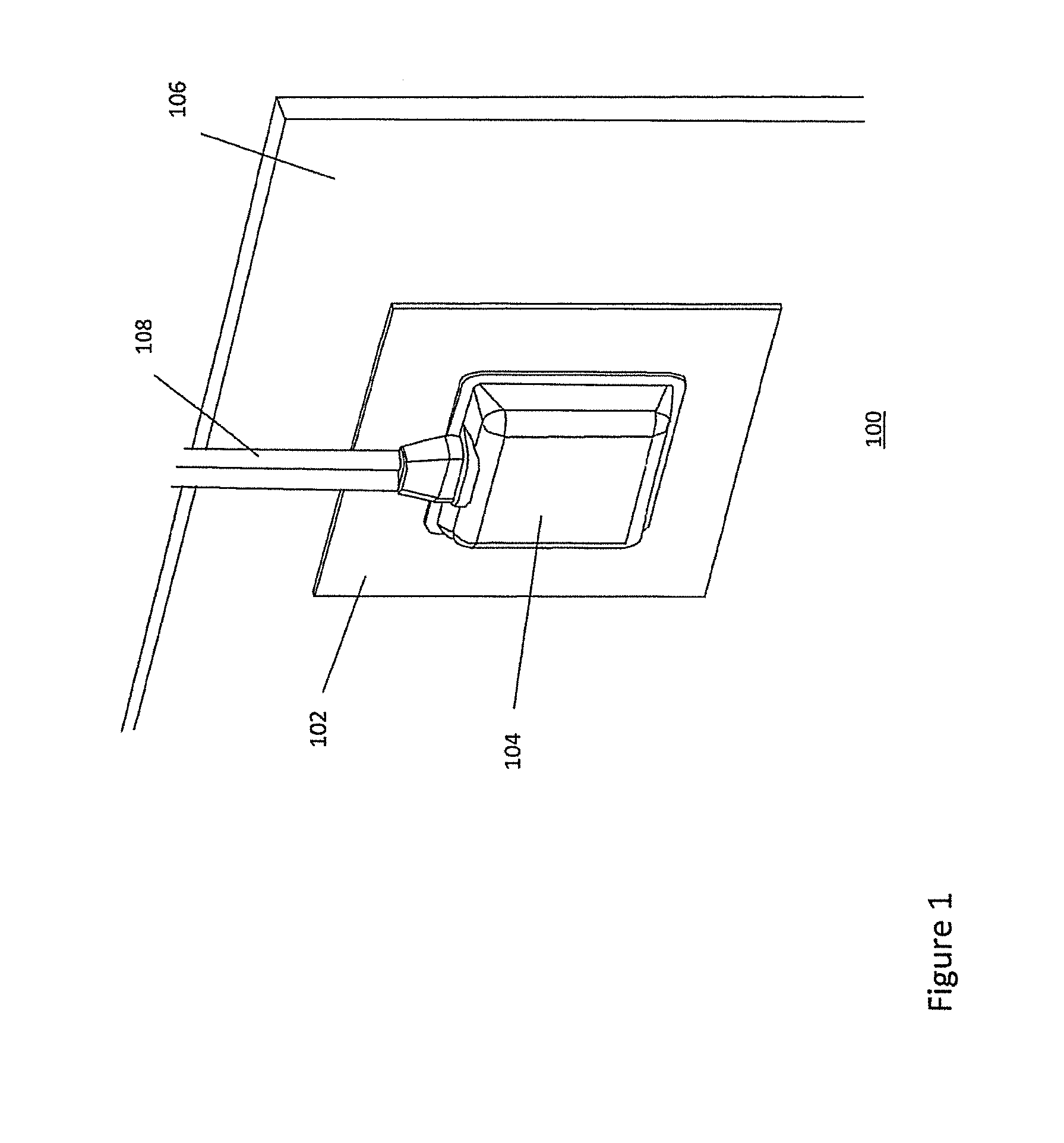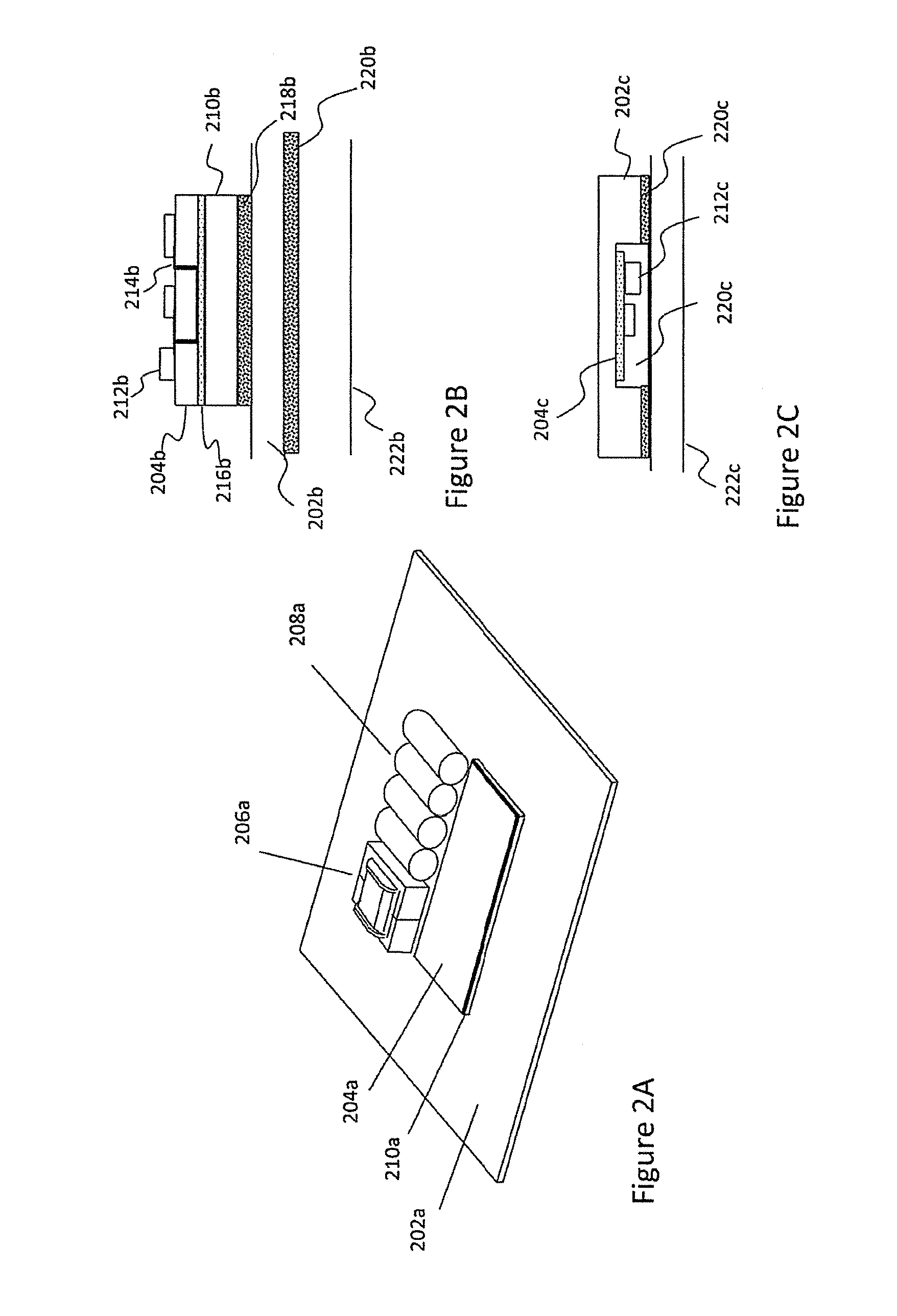Thermally mounting electronics to a photovoltaic panel
a photovoltaic panel and electronic technology, applied in the direction of electrical apparatus construction details, pv power plants, semiconductor devices, etc., can solve the problems of affecting the overall conversion efficiency of solar power systems, affecting the convective and radiative transfer of heat generated by electronic components to the surrounding air, and being expensive to fabricate, etc., to achieve the effect of enlarged siz
- Summary
- Abstract
- Description
- Claims
- Application Information
AI Technical Summary
Benefits of technology
Problems solved by technology
Method used
Image
Examples
Embodiment Construction
[0032]Referring now in greater detail to the drawings, FIG. 1 depicts a schematic of an exemplary electronics assembly 100 for a photovoltaic panel according to one embodiment of the invention. In this embodiment, the electronics assembly or module may comprise a substrate 102 of a material with a medium or high thermal conductivity such as a metal e.g. stainless steel 16-27, steel 50, aluminum 220, aluminum alloys (e.g. with Cu) 120-180, gold 318, silver 429 and boron nitride (BN) 600 (in W / (mK)). Other materials however are also possible. For example, the substrate may be of a polymer with a high thermal conductivity. In one embodiment, the substrate may be a Metal Clad PCB (MCPCB). Such substrate comprises a metal sheet (Aluminum, Steel, Copper) of 1-2 mm, a 0.05-0.5 mm isolation layer and a conductive metallic (typically Copper) pattern on top of the isolation layer.
[0033]The substrate 102 may be a thin, flat substrate in one embodiment which may be mounted onto the back of a PV...
PUM
 Login to View More
Login to View More Abstract
Description
Claims
Application Information
 Login to View More
Login to View More - R&D
- Intellectual Property
- Life Sciences
- Materials
- Tech Scout
- Unparalleled Data Quality
- Higher Quality Content
- 60% Fewer Hallucinations
Browse by: Latest US Patents, China's latest patents, Technical Efficacy Thesaurus, Application Domain, Technology Topic, Popular Technical Reports.
© 2025 PatSnap. All rights reserved.Legal|Privacy policy|Modern Slavery Act Transparency Statement|Sitemap|About US| Contact US: help@patsnap.com



